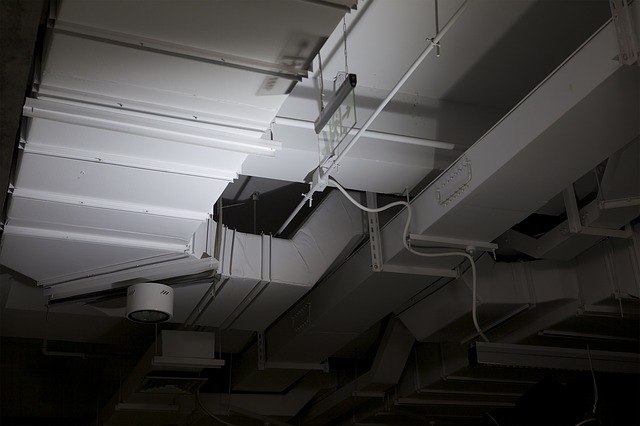Air change rates
Contents |
[edit] Introduction
Air is continuously exchanged between buildings and their surroundings as a result of mechanical and passive ventilation and infiltration through the building envelope. The rate at which air is exchanged is an important property for the purposes of ventilation design and heat loss calculations and is expressed in ‘air changes per hour’ (ach).
If a building has an air change rate of 1 ach, this equates to all of the air within the internal volume of the building being replaced over a 1 hour period.
[edit] Calculating air change rates
A number of techniques are available for calculating the air change rate of a building. The choice of method depends on the accuracy required. The most straightforward method relies on the use of a simple mathematical equation, while the most complex methods use computational analysis and consider many different variables (such as computational fluid dynamics).
The basic method calculates air change rates using the following equation:
n = 3,600 x q / V
Where:
n = Air changes per hour (ach)
q = Fresh air flow rate (m3/s)
Online air change rate calculators and tables are available for different room types, such as: https://www.electricalworld.com/en/Air-Change-Calculator-and-Table/cc-48.aspx
[edit] Measuring air change rates
Air change rates resulting from ventilation can be quantified by measuring the air velocity at selected positions within supply ducts. The velocities are normally measured using a pitot tube connected to a pressure gauge or manometer, or using a hot wire probe and meter.
Tracer gas measurement can be used to determine the average air change rate for naturally'-'ventilated spaces' and to measure infiltration (air tightness)'. To do this, a detectable, non-toxic gas is released into the space and the reduction in its concentration within the internal atmosphere is monitored over a given time period.'
For more information, see Air permeability testing.
[edit] Legislation and guidance
Specific air change rates are required in buildings to control internal temperatures and to introduce clean, oxygen-rich air and remove stale, humid air. The requirements will vary depending on a number of factors including; the type of space, the level of occupation and usage and the geographical location of the building.
In the UK, several legislative documents have been published that set appropriate standards for air change rates in different types of construction.
Approved document F sets out the minimum requirements for ventilation to provide comfortable conditions and to prevent surface and interstitial condensation. Approved document F expresses air change rates in a number of different ways:
- air changes per hour.
- litres per second (l/s).
- l/s per m^2 of internal floor area.
- l/s per piece of equipment.
- l/s per person.
For many types of building, the approved document simply refers to standards set in CIBSE Guide B: Heating, ventilating, air conditioning and refrigeration.
A wide range other guidance is also available, including CIBSE KS17: Indoor air quality and ventilation, which provides information about the required air change rates to achieve acceptable indoor air quality, and BS 5925: Code of practice for ventilation principles and designing for natural ventilation, which sets out recommended air flow rates for natural ventilation.
[edit] Related articles on Designing Buildings
- Air infiltration.
- Air permeability testing.
- Air quality.
- Air Quality Taskforce.
- Air tightness in buildings.
- Computational fluid dynamics.
- Draughts in buildings.
- Effective ventilation in buildings.
- Indoor air quality.
- Stale air.
- The history of non-domestic air tightness testing.
- UV disinfection of building air to remove harmful bacteria and viruses.
- Ventilation.
[edit] External references
- Building Regulations: Approved Document F – Ventilation.
- CIBSE KS17: Indoor Air Quality and Ventilation.
- CIBSE Guide B: Heating, ventilating, air conditioning and refrigeration.
- BS 5925: Code of practice for ventilation principles and designing for natural ventilation.
- https://www.electricalworld.com/en/Air-Change-Calculator-and-Table/cc-48.aspx
Featured articles and news
Infrastructure that connect the physical and digital domains.
Harnessing robotics and AI in challenging environments
The key to nuclear decommissioning and fusion engineering.
BSRIA announces Lisa Ashworth as new CEO
Tasked with furthering BSRIA’s impressive growth ambitions.
Public buildings get half a million energy efficiency boost
£557 million to switch to cleaner heating and save on energy.
CIOB launches pre-election manifesto
Outlining potential future policies for the next government.
Grenfell Tower Inquiry announcement
Phase 2 hearings come to a close and the final report due in September.
Progress from Parts L, F and O: A whitepaper, one year on.
A replicated study to understand the opinion of practitioners.
ECA announces new president 2024
Electrical engineer and business leader Stuart Smith.
A distinct type of countryside that should be celebrated.
Should Part O be extended to existing buildings?
EAC brands heatwave adaptation a missed opportunity.
Definition of Statutory in workplace and facilities management
Established by IWFM, BESA, CIBSE and BSRIA.
Tackling the transition from traditional heating systems
59% lack the necessary information and confidence to switch.
The general election and the construction industry
As PM, Rishi Sunak announces July 4 date for an election.
Eco apprenticeships continue help grow green workforce
A year after being recognised at the King's coronation.
Permitted development rights for agricultural buildings
The changes coming into effect as of May 21, 2024.























